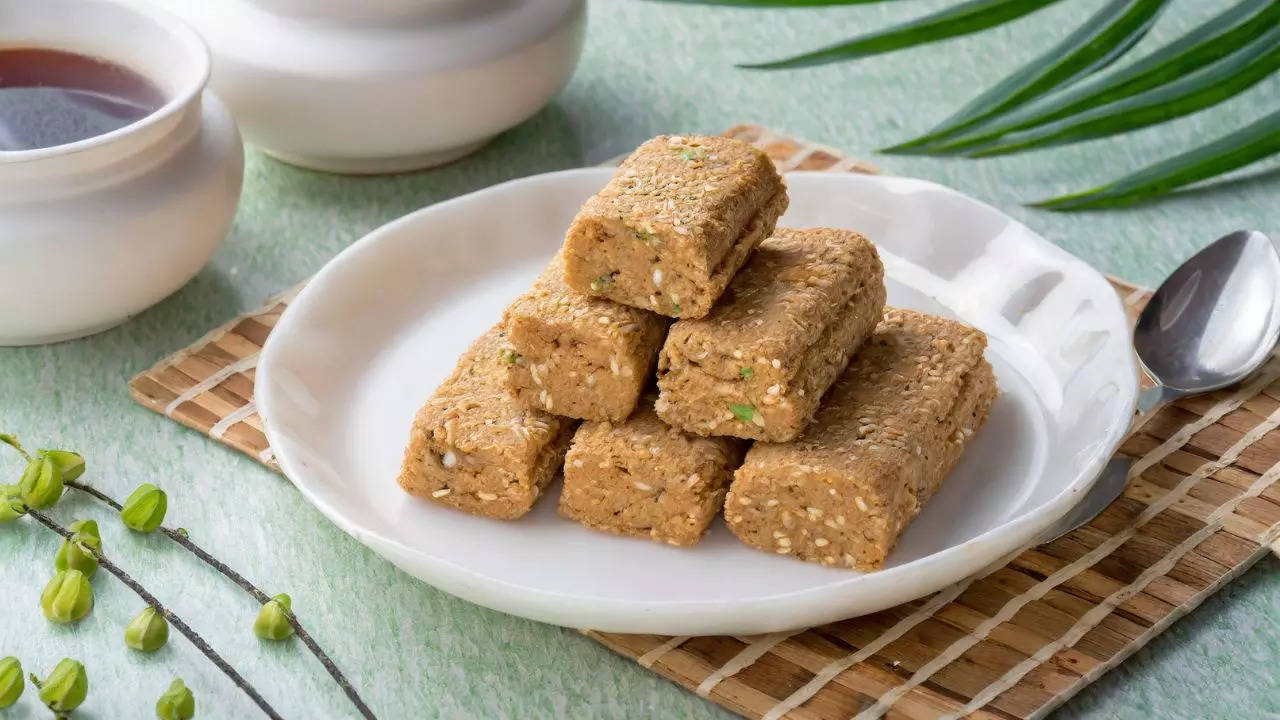Table of Contents

Winter brings loads of delicious and comforting sweets to our plate that not only satiates taste buds but also provide warmth and nutrients to the body. Apart from pinni, malaiyo and gajar ka halwa, gajak is another winter treat you must try. But did you know this quintessential winter treat, loved for its crunchy texture and nutty flavour has its roots in the state of Madhya Pradesh? Let's explore the origin of gajak.
Also Read: Yami Gautam Indulges In Panjeeri Laddoos On Her Shoot After Baby, Learn To Make This Winter Dessert
What Is Gajak
Gajak is traditionally made from sesame seeds (til), jaggery (gur) and often enhanced with peanuts, dry fruits and ghee. It's the crunch and earthy sweetness that make it a favourite snack during the cold months, particularly in states like Madhya Pradesh, Rajasthan and Uttar Pradesh. It is known to provide warmth during the colder months.
History Of Gajak
The story of this sweet treat begins in the small town called Morena in the state of Madhya Pradesh. This region is known for its fertile lands and the Chambal River and is considered the birthplace of this winter snack. While sesame seeds and jaggery have been staples in Indian kitchens for years, their combination into the crispy sheets of gajak is credited to the Mughal era.
As per the legend, gajak was first created for the royal family of Morena in the 17th century, during the rule of Mughal Emperor Aurangzeb. The recipe was initially kept as a secret, but gradually made its way to the masses, becoming a household favourite. The locals of Morena give the credit to a man named Sitaram Shivhare for popularising gajak in the 1940s. Using the region’s unique water from the Chambal River, Shivhare refined the recipe, transforming the sweet into a cultural icon. Celebrations like Makar Sankranti, Lohri and Pongal are incomplete without plates of gajak shared among family and friends.
Nutrients In Gajak
Sesame seeds is a key ingredient in this recipe which is loved for their medicinal and spiritual importance in India for over 5,000 years. While jaggery is a natural sweetener prepared from sugarcane juice and has high mineral content and energy-boosting properties. Therefore, both these ingredients make gajak a nutritious winter snack that is not only tasty but also keeps the body warm.
Morena’s Gajak
Morena’s gajak holds an important place in Indian culinary tradition and its reputation is beyond the country’s borders. In recognition of its unique preparation and historical significance, it was awarded a Geographical Indication (GI) tag. Today, it is exported to countries like the United States, England, Australia and the UAE.
Gajak’s preparation is an intricate process that requires precision and patience. To prepare the dish, sesame seeds are carefully roasted and while jaggery is melted over low heat until it reaches the perfect consistency. Further, the two ingredients are combined into a thick paste, spread thinly, and allowed to cool before being cut into crisp sheets. Traditionally ghee and dry fruits like almonds, pistachios, and cashews are included in the recipe. Over time, gajak has got many variations such as gud-til gajak, mawa-til gajak and even chocolate gajak.

